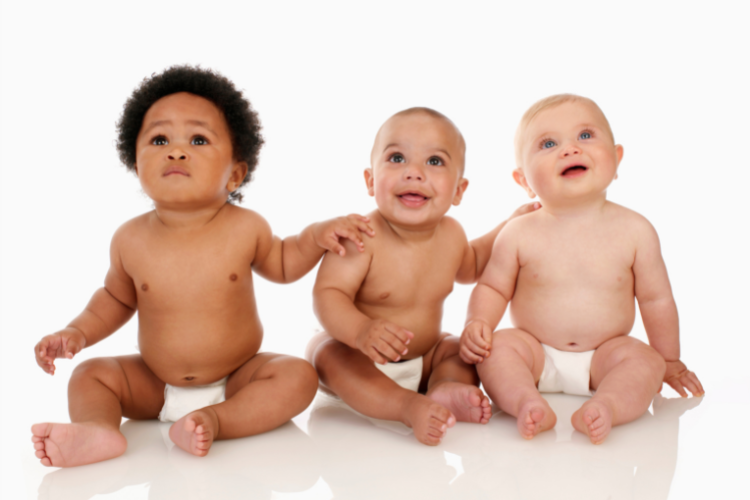Guest Post by Katy Fleming, MA, LPC, BSN, RN
It’s concerning to hear changes in your child’s breathing. As a parent, you never want to hear or see your child in distress.
Various conditions and circumstances may lead to respiratory problems or an altered breathing pattern such as asthma, respiratory infections, and croup.
We’ll discuss how to measure your child’s breathing rate, the differences in infants, and abnormal breath sounds to discuss with your child’s pediatrician.

How to Monitor Your Child’s Breathing At Home
First and foremost, let’s establish a baseline. It’s important to know the expected respiratory rate and breathing pattern for a child especially since it differs from adults.
When monitoring a person’s breathing, we look at several factors, including respiratory rate.
Respiratory rate is the number of breaths per minute. It’s one of the four vital signs utilized to measure the body’s basic functions. You can measure your child’s respiratory rate by counting the number of times their chest rises and falls in one minute while they rest. For infants and younger children, it may help to place your hand lightly on their chest to identify each breath better.
Infants and children breathe much faster than adults, so it’s essential to know the average rate. See the typical respiratory rates below listed by age group:
- Infants (0-12 months): 30-60 breaths per minute
- Toddlers (1-3 years): 24-40 breaths per minute
- Pre-schoolers (3-5): 22-34 breaths per minute
- School-age (5-12): 18-30 breaths per minute
- Adolescents (12-18): 12-16 breaths per minute
- Adults (18+): 12-20 breaths per minute
If your child’s respiratory rate is consistently below 10 breaths per minute or above 60 breaths per minute while at rest, seek medical attention. You can contact your child’s pediatrician any time there’s a concern for your child’s breathing, as well.

Noisy Newborns
For several reasons, breathing patterns sound and look different in babies. Infants are still trying to figure out how everything works and their bodies are still fully developing. They primarily breathe through their nose and not their mouths. Additionally, babies are typically more congested.
These are a few examples of why babies may sound different than older children or adults in their breathing.
Infants may have short pauses in breathing that last at least 3 seconds followed by short, shallow breaths. This is called periodic breathing and is normal for babies as long as it doesn’t last longer than 20 seconds.
As we discussed, the average respiratory rate for infants is 30-60 breaths per minute. However, newborns aren’t very consistent. A 2016 study found that infants in their first 24 hours after birth drastically changed respiratory rates from hour to hour.
Learn your infant’s normal breath sounds and patterns so that you can quickly identify abnormal breaths. Keep in mind that your baby may begin breathing faster when they’re upset and overheated.
Factors Affecting Respiratory Rate
Whether slowing down or increasing their breathing, multiple factors may affect your child’s respiratory rate. When engaging in exercise, such as playing soccer with their friends, your child’s respiratory rate will naturally increase.
Our bodies work hard to remain in harmony. So when your child is fighting a fever, their respiratory rate increases as their body is trying to cool down. Additional examples of factors that may increase the rate of your child’s breathing are asthma, dehydration, anxiety, and stimulants (such as ADHD medication).

Important Breath Sounds
Other important aspects to consider when monitoring your child’s breathing are the type of breath sounds.
Children’s airways are smaller than adults, so their breathing is much noisier. Let’s discuss important breath sounds that typically indicate a problem:
- Wheezing: Higher-pitch sound typically occurring on exhale.
- Common Causes: Usually asthma or a virus.
- Stridor: High-pitched turbulent sound and less-musical sounding than wheezing. Occurs on both inhale and exhale.
- Common Causes: Croup, upper respiratory infection, or choking on a small object
If you’re concerned about your child’s breathing, call their pediatrician. If your child is having difficulty breathing or their skin, lips, etc. are turning blue, seek immediate medical attention.
For more information about breathing, try these:
- Baby Breathing Basics - FREE eBook for Parents
- Signs of Respiratory Distress in Children
- What Parents Need to Know About Breath-Holding Spells
- Month One: What Parents Need to Know About Baby Breathing
- The Importance of Tummy Time on Your Newborn's Breathing
As a licensed counselor and registered nurse, Katy approaches freelance writing with years of experience and a unique perspective. Alongside her partner, Katy loves to travel the world and embrace other cultures from volcanoes in Iceland to villages in India.
The Nozebot is a battery-powered suction device designed to clear nasal congestion in babies and children.



